Importance of Conservation of Forest and Wildlife Sustaining Natural Habitats
- August 15, 2024
- 0 comment
In the face of accelerating environmental changes, the conservation of forests and wildlife stands as a critical pillar in sustaining the planet’s biodiversity and ecological balance. Forests, teeming with diverse flora and fauna, serve as the Earth’s lungs, purifying the air while providing vital habitats for wildlife.
What is the Conservation of Forests and Wildlife?
The preservation of forests and wildlife is crucial due to the significant alterations humans have made to the Earth’s natural landscapes and ecosystems. Wildlife plays an essential role in maintaining environmental stability, participating in various natural processes, either directly or indirectly. Each species, regardless of its role, contributes to the food chain, highlighting a complex web of interdependence essential for mutual survival.

Forests are not just repositories of resources; they play a pivotal role in regulating global climates, reducing soil erosion, and providing habitat for over 80% of terrestrial wildlife and biodiversity. Understanding the importance of these natural assets, this article explores the reasons and strategies for conserving forests and wildlife, underscoring the necessity of such efforts for a sustainable future.
Why Do We Need to Conserve Forest and Wildlife
Conserving forests and wildlife is essential for maintaining the health and stability of our planet. Forests play a pivotal role in carbon sequestration, absorbing significant amounts of carbon dioxide from the atmosphere, which helps mitigate the effects of climate change. They also regulate water cycles, ensuring clean and sustainable water sources for millions of people. Moreover, forests provide habitat for over 80% of the world’s terrestrial biodiversity, supporting countless species of plants and animals that are integral to ecological balance. Protecting these habitats helps maintain biodiversity, which is crucial for ecosystem resilience, enabling natural communities to withstand and recover from environmental stresses and disturbances.
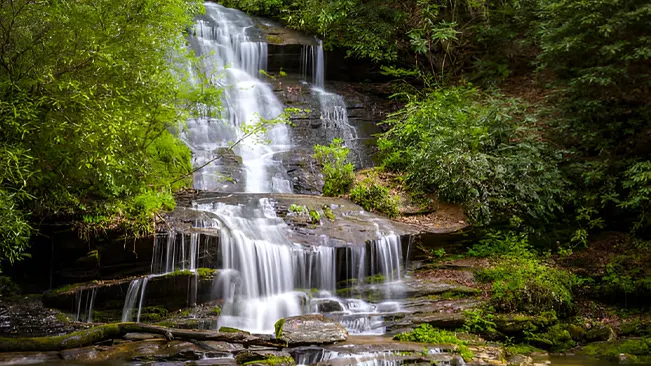
Wildlife conservation is equally important as it maintains ecological processes that support life on Earth. Many species perform vital roles such as pollination, seed dispersal, and the maintenance of trophic levels within food webs. The loss of any species can have cascading effects on ecosystem function and the services it provides to humanity, including agriculture, the economy, and even cultural aspects of human societies. Furthermore, maintaining diverse populations of wildlife promotes genetic diversity, which is essential for species to adapt to changing environmental conditions and resist diseases. Thus, the conservation of forests and wildlife is not just an environmental issue but a crucial aspect of sustaining human life and well-being on this planet.
Why is Wildlife Important to Us?
Wildlife plays a crucial role in both our ecosystems and cultural heritage. While plants are widely recognized for their contributions to modern medicine, certain animals also play key roles in the development of pharmaceuticals. For instance, components derived from cobra venom are utilized in treatments for diseases such as leprosy, and substances from lobsters have been found to possess anti fungal properties. Moreover, microorganisms within wildlife are instrumental in processes like nitrogen fixation, which significantly enhances soil fertility, promoting healthier agricultural practices and ecosystems.

Wildlife conservation is crucial not only for preserving biodiversity but also for maintaining cultural heritage, as many communities are defined by their local species, integral to their traditions and livelihoods. Loss of habitats means losing both biodiversity and cultural identity. Furthermore, various species help balance the environment; plants, for instance, regulate atmospheric carbon dioxide and contribute to climate stability. Without improved conservation efforts, future generations may never see species like the Amur leopard, Cross River gorilla, and Sumatran elephant, all threatened by human activities. The urgent need for effective strategies is evident to preserve biodiversity for future sustainability.
Why are Forests Important for Us?
Forests are vital to the global economy and environmental health, supporting millions through industries like pharmaceuticals, textiles, and various other raw materials derived from forest resources. The loss of forests would not only endanger these jobs but also disrupt livelihoods dependent on forest-based economies. Forests serve as critical habitats for a diverse array of wildlife. The destruction of forest areas threatens these species, often leading to a decline in biodiversity and the extinction of vulnerable plant and animal species. This habitat loss is one of the key challenges in conservation efforts.
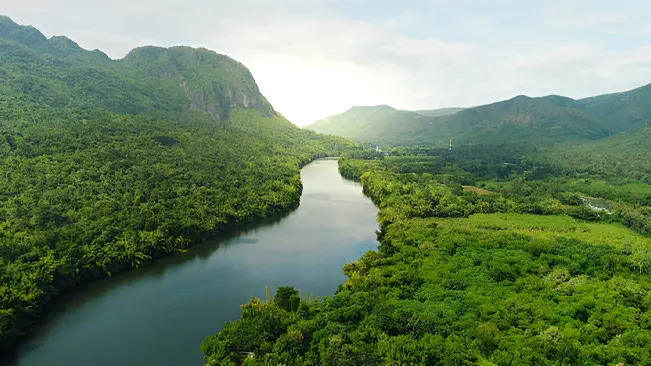
Forests are crucial for balancing Earth’s atmosphere by producing oxygen and absorbing carbon dioxide, which helps mitigate climate change. They regulate air quality, act as natural buffers against floods, and prevent soil erosion. Additionally, converting forests into sustainable tourism spots provides economic benefits and boosts conservation efforts. Tourists support local economies and enhance conservation awareness. Forests also play a key role in the carbon cycle by acting as carbon sinks, absorbing CO2 emissions and reducing the impact of human activities on climate change.
Steps to Conserve Wildlife
1. Habitat Protection and Restoration
Habitat protection involves safeguarding existing ecosystems from degradation and encroachment, which is essential for preserving biodiversity. This can be achieved by enforcing conservation laws and establishing protected areas such as wildlife reserves and national parks. These areas provide a safe haven for species, ensuring that they have the space and resources needed to thrive. Effective management and regulation within these zones can prevent illegal activities like logging and poaching, which pose significant threats to wildlife.
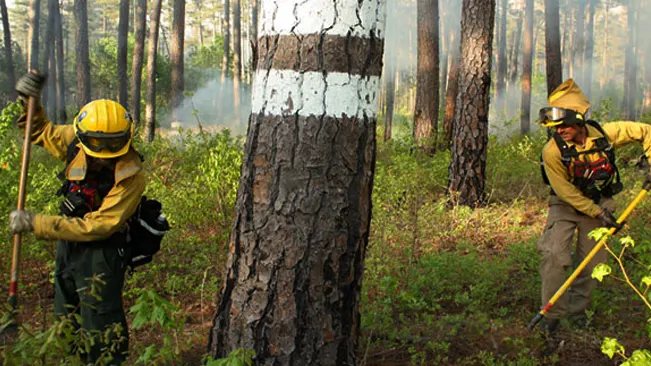
Restoration of degraded habitats is equally important to support wildlife populations and ecological balance. This process includes activities like reforestation, which replenishes tree cover, wetland restoration, which revitalizes aquatic ecosystems, and the removal of invasive species that disrupt native flora and fauna. Restoring natural habitats not only benefits wildlife but also enhances ecosystem services such as water filtration and carbon sequestration, contributing to environmental sustainability and climate resilience.
2. Anti-Poaching Measures
Implementing strict anti-poaching laws and increasing patrols in wildlife-rich areas are vital steps to deter illegal hunting and trapping. Enforcement of these laws ensures that poachers face significant penalties, which can act as a strong deterrent. Increasing patrols by trained rangers in vulnerable areas helps to monitor and protect wildlife from illegal activities, safeguarding endangered species and maintaining biodiversity.
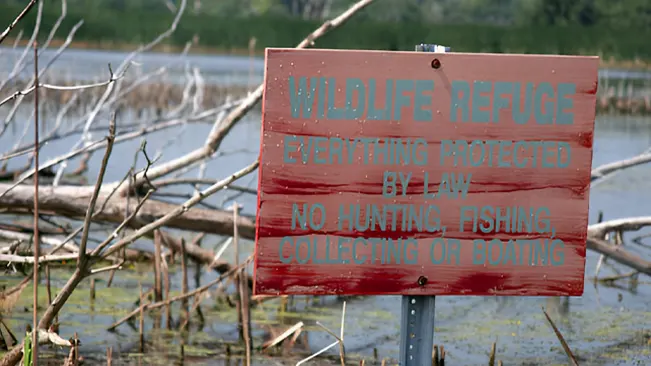
The use of technology, such as drones, infrared cameras, and automated systems, significantly enhances monitoring and surveillance efforts. These tools provide real-time data and images, allowing conservationists to detect and respond to poaching activities more efficiently. By leveraging technology, conservation teams can cover larger areas with fewer resources, improving the effectiveness of anti-poaching initiatives and ensuring the safety of wildlife populations.
3. Wildlife Corridors
Wildlife corridors are essential for connecting isolated habitats, allowing animals to migrate safely between them. These corridors facilitate feeding, mating, and habitat expansion, which are crucial for maintaining genetic diversity and the survival of species. By enabling animals to move freely, corridors help prevent inbreeding and allow populations to adapt to environmental changes, thereby enhancing resilience.
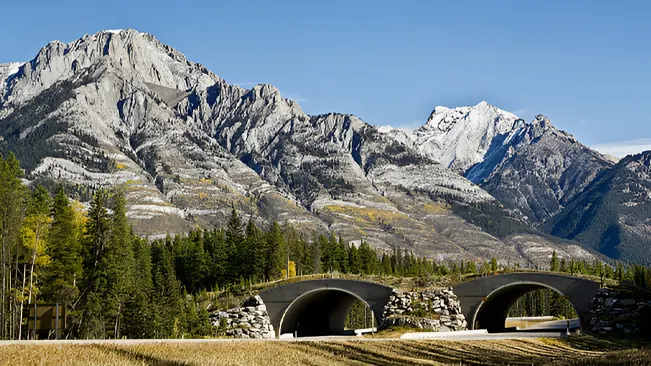
Creating wildlife corridors involves strategic planning and collaboration with local communities, landowners, and governments. This process requires identifying critical habitats and designing pathways that minimize human-wildlife conflict. Corridors can include natural features like rivers and mountain ranges or man-made structures such as overpasses and underpasses that help wildlife cross barriers like roads. Successful implementation of wildlife corridors contributes to ecosystem connectivity and the overall health of biodiversity.
4. Community Involvement
Engaging local communities in wildlife conservation efforts is vital for fostering a sense of ownership and responsibility towards biodiversity. By providing education on the importance of biodiversity and involving communities in tourism and conservation activities, conservationists can empower locals to become active participants in protecting their environment. Educational programs can raise awareness about the ecological and economic benefits of conservation, encouraging community support and cooperation.

Supporting community-based initiatives that offer economic benefits from conservation can create sustainable livelihoods. These initiatives might include Eco-tourism, where communities earn income by hosting tourists interested in wildlife, or sustainable harvesting of natural resources, which ensures that environmental impacts are minimized. By aligning conservation goals with economic incentives, communities are more likely to engage in practices that protect and preserve wildlife and their habitats.
5. Legislation and Policy Enforcement
Developing and enforcing strong wildlife protection laws is crucial to combating illegal hunting, logging, and land conversion. These laws need to be comprehensive and backed by rigorous enforcement mechanisms to be effective. Penalties for violations should be severe enough to deter individuals and organizations from engaging in activities that harm wildlife and their habitats.

Participation in international treaties and agreements is essential for addressing wildlife conservation on a global scale. These treaties facilitate cooperation between countries to combat illegal trade and protect endangered species. By aligning national policies with international standards, countries can strengthen their conservation efforts and contribute to global biodiversity goals. Effective policy enforcement ensures that wildlife protection measures are consistently applied, reducing the risk of extinction for vulnerable species.
6. Research and Monitoring
Conducting scientific research is essential to gain a deeper understanding of wildlife needs, population dynamics, and threats. This research provides critical data that informs conservation strategies, helping to identify priority areas for intervention and management. By studying species behavior, habitat requirements, and ecological interactions, scientists can develop targeted approaches to support wildlife populations.

Regular monitoring of wildlife populations and health is crucial for assessing the effectiveness of conservation strategies. By tracking changes in population sizes, distribution, and health, conservationists can identify emerging threats and adapt their strategies accordingly. Monitoring programs help detect issues early, allowing for timely interventions that prevent further declines in wildlife populations and ensure the long-term success of conservation efforts.
7. Public Awareness and Education
Increasing public awareness about the importance of wildlife is vital for fostering a culture of conservation. Education programs, media campaigns, and public events can highlight the ecological, economic, and cultural significance of biodiversity. By reaching diverse audiences, these initiatives can inspire individuals to take action in support of wildlife conservation and adopt environmentally friendly behaviors.
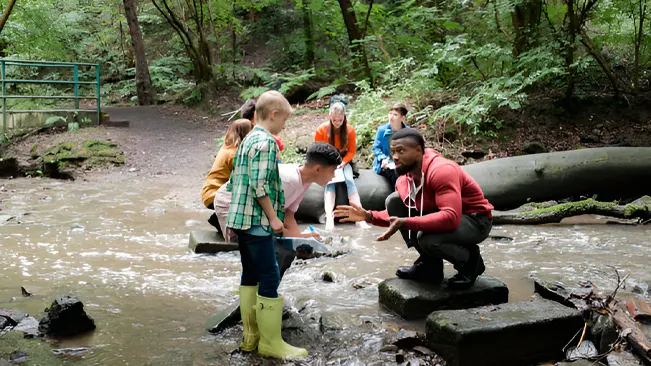
Educating the public on how they can contribute to wildlife conservation in their daily lives is a key aspect of these efforts. Simple actions, such as reducing waste, supporting sustainable products, and participating in local conservation projects, can collectively have a significant impact. By empowering individuals with knowledge and practical tools, public awareness campaigns can drive positive change and encourage a broader commitment to preserving the natural world.
8. Sustainable Practices
Promoting and implementing sustainable land use and agricultural practices are essential for minimizing environmental impact and encouraging biodiversity. Sustainable practices, such as agroforestry, crop rotation, and organic farming, can reduce habitat destruction, soil degradation, and pollution. These methods support healthier ecosystems and provide resources for both wildlife and human communities, creating a balance between development and conservation.

Reducing human-wildlife conflicts is another critical component of sustainable practices. Strategies such as using fencing, deploying guard animals, and organizing community patrols can protect both wildlife and human interests. By addressing the root causes of conflict and promoting coexistence, these measures help ensure the well-being of wildlife while safeguarding human livelihoods and property. Encouraging sustainable practices benefits both nature and society, contributing to long-term environmental health and stability.
Steps to Conserve Forests
1. Legal Protection
Enacting and enforcing laws that protect forests from illegal logging, land conversion, and other harmful practices is fundamental to forest conservation. These laws serve as the legal framework to prevent activities that threaten forest ecosystems, ensuring that forests are preserved for future generations. Establishing protected areas such as national parks and nature reserves is a key component of this strategy, as these areas provide safe havens where all forms of exploitation are prohibited, preserving biodiversity and maintaining ecological integrity.

To ensure the effectiveness of these laws, it is crucial to have strong enforcement mechanisms in place. This includes regular monitoring and patrolling of protected areas to detect and prevent illegal activities. Involving local communities and stakeholders in the enforcement process can enhance compliance and foster a sense of ownership and responsibility for forest protection. By prioritizing legal protection, countries can safeguard their natural resources and contribute to global conservation efforts.
2. Sustainable Management
Implementing sustainable forest management practices is essential for balancing the use of forest resources with the need to preserve them for the future. This involves practices like controlled logging, where timber harvesting is carefully planned and executed to minimize environmental impact. Replanting efforts are also vital, ensuring that harvested areas are replenished with native species to maintain forest health and resilience.

Sustainable management also includes the sustainable harvest of non-timber forest products, such as fruits, nuts, and medicinal plants, which provide valuable resources without damaging the forest ecosystem. By promoting sustainable practices, forest managers can support local economies while conserving biodiversity and ecosystem services. These practices help ensure that forests continue to provide essential benefits, such as carbon sequestration and habitat for wildlife, for generations to come.
3. Reforestation and Afforestation
Reforestation projects aim to restore deforested areas by planting native trees and vegetation, which can help revive degraded ecosystems. These efforts enhance biodiversity, improve soil health, and increase carbon sequestration, contributing to climate change mitigation. By restoring natural habitats, reforestation supports the recovery of wildlife populations and the reestablishment of ecological processes.
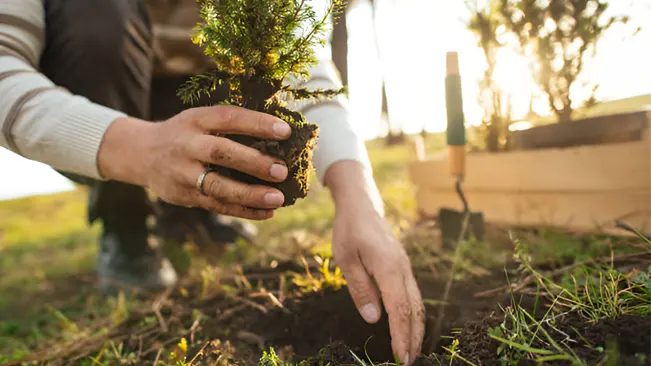
Afforestation involves creating new forested areas on previously non-forested lands, which can expand forest cover and provide additional environmental benefits. These projects are especially important in regions where deforestation has significantly reduced forest area, helping to rebuild natural landscapes and support ecosystem resilience. Both reforestation and afforestation contribute to global efforts to combat climate change and biodiversity loss, making them critical components of sustainable land management strategies.
4. Community Involvement
Empowering local communities and indigenous peoples to manage their forests through community forestry programs is crucial for effective conservation. These programs recognize the traditional knowledge and practices of indigenous peoples, allowing them to play a central role in forest management. By providing education and training, communities can develop the skills needed to sustainably manage forest resources, ensuring that conservation efforts are locally relevant and effective.

Economic incentives are key to encouraging community involvement in forest conservation. By offering benefits such as employment opportunities, income from sustainable resource use, and support for Eco-tourism, communities are more likely to engage in conservation activities. Empowering communities not only enhances the success of conservation initiatives but also promotes social and economic development, creating a win-win situation for people and nature.
5. Economic Incentives
Developing economic incentives is a powerful tool for promoting forest conservation. Payments for ecosystem services (PES) are one such incentive, where landowners and communities are compensated for maintaining forests that provide valuable ecological services, such as clean water, carbon storage, and biodiversity. This approach makes conservation economically viable and encourages stakeholders to prioritize forest protection.

Carbon credits offer another economic incentive by allowing countries and companies to offset their carbon emissions through forest conservation projects. By participating in carbon markets, communities can generate revenue while contributing to climate change mitigation. Eco-tourism opportunities also provide economic benefits by attracting visitors interested in experiencing natural landscapes and wildlife. By aligning economic incentives with conservation goals, stakeholders are more likely to support sustainable forest management practices.
6. International Cooperation
Collaborating on international efforts is essential for addressing global issues such as illegal logging and climate change that impact forests worldwide. By participating in international agreements and conventions, countries can align their policies with global conservation goals and enhance their capacity to address transboundary challenges. International cooperation facilitates the sharing of knowledge, resources, and best practices, strengthening global efforts to protect forests.

Engaging in international partnerships can also enhance political will and mobilize resources for forest conservation. Collaborative initiatives, such as joint research projects and capacity-building programs, can support the development and implementation of effective conservation strategies. By working together, countries can address the root causes of deforestation and degradation, contributing to global efforts to preserve forests and promote sustainable development.
7. Technology and Innovation
Utilizing technology such as satellite imagery, drones, and artificial intelligence is crucial for monitoring deforestation and forest health more effectively. These technologies provide real-time data and insights that can enhance the enforcement of conservation laws and improve forest management practices. By leveraging technological innovations, conservationists can cover larger areas with fewer resources, increasing the efficiency and effectiveness of their efforts.

Technological advancements can also support community-based conservation initiatives by providing tools and resources that enhance local capacity for forest management. For example, mobile applications and online platforms can facilitate data collection, sharing, and analysis, empowering communities to participate actively in conservation efforts. By integrating technology into conservation strategies, stakeholders can address complex challenges and ensure the long-term sustainability of forest ecosystems.
Conclusion
The preservation of forests and wildlife is vital for maintaining the planet’s health and biodiversity. Protecting forests, enforcing anti-poaching laws, and promoting sustainable practices help safeguard the diverse ecosystems that support numerous species. Strategies such as reforestation and wildlife protection measures are essential to preserving our ecosystems for future generations. By conserving forests and wildlife, we ensure a healthy environment for all living beings, including plants, animals, and humans.
FAQs
- What is forest and wildlife conservation?
Forest and wildlife conservation involves protecting and managing forests and wildlife habitats to preserve biodiversity, prevent species extinction, and maintain ecological balance. - Why is the conservation of forests and wildlife important?
Conservation is crucial because it helps maintain ecological balance, supports biodiversity, prevents the loss of species, and ensures a healthy environment for all living beings. - What are some common methods of forest conservation?
Common methods include reforestation, sustainable logging practices, protection of existing forests, establishing protected areas, and enforcing laws against deforestation. - How does poaching affect wildlife conservation?
Poaching leads to the illegal hunting and killing of animals, often driving species to the brink of extinction, disrupting ecosystems, and undermining conservation efforts. - What are sustainable practices in forest conservation?
Sustainable practices involve managing forests in ways that meet current needs without compromising the ability of future generations to meet their own needs. This includes sustainable logging, forestry, and Eco-friendly tourism. - What role do protected areas play in wildlife conservation?
Protected areas, such as national parks and wildlife reserves, provide safe habitats for wildlife, protect biodiversity, and prevent habitat destruction and poaching. - How can individuals contribute to forest and wildlife conservation?
Individuals can contribute by supporting conservation organizations, reducing their carbon footprint, participating in reforestation projects, avoiding products made from endangered species, and spreading awareness about conservation issues. - What is reforestation, and why is it important?
Reforestation involves planting trees in deforested or degraded areas to restore ecosystems, improve air quality, combat climate change, and provide habitats for wildlife. - How do conservation laws and policies help protect forests and wildlife?
Conservation laws and policies regulate activities that impact forests and wildlife, such as logging, hunting, and land development. They establish protected areas and provide frameworks for sustainable management practices. - What is the impact of climate change on forests and wildlife?
Climate change affects forests and wildlife by altering habitats, causing extreme weather events, and disrupting food and water sources. It can lead to shifts in species distribution and increased vulnerability to diseases and pests. - Can conservation efforts help combat climate change?
Yes, conservation efforts, such as protecting forests and restoring degraded lands, can help combat climate change by sequestering carbon dioxide, maintaining biodiversity, and enhancing ecosystem resilience. - What are some successful examples of forest and wildlife conservation?
Successful examples include the reforestation of the Amazon rainforest, the recovery of endangered species like the American bald eagle, and the establishment of large protected areas such as Yellowstone National Park. - How does deforestation impact biodiversity?
Deforestation leads to habitat loss, fragmentation, and degradation, which can result in the decline or extinction of species, disrupt ecological processes, and reduce overall biodiversity. - What is the significance of biodiversity in forest ecosystems?
Biodiversity is essential for the health and stability of forest ecosystems. It enhances resilience to environmental changes, supports ecosystem services, and provides resources for humans and other species. - What are the economic benefits of forest and wildlife conservation?
Conservation efforts can boost local economies through Eco-tourism, sustainable forestry, and the provision of ecosystem services such as clean water, air, and pollination.

Joel Cunningham
Forestry AuthorI'm Joel Cunningham, an expert in pruning and weed management with over a decade of experience. My skills are rooted in formal training and extensive practice, focusing on advanced pruning techniques and efficient weed control. I'm known for my quality work, precision, and deep understanding of plant health and soil dynamics. My contributions extend to educational initiatives where I share sustainable practices and advice, establishing myself as a reliable and authoritative figure in the gardening community.

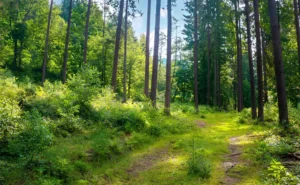

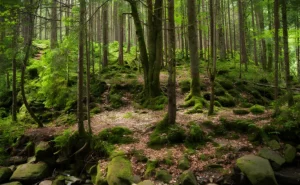
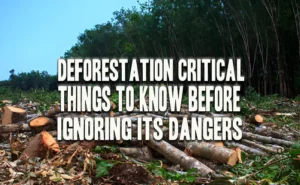
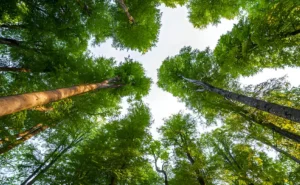
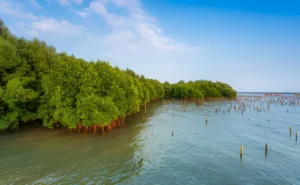


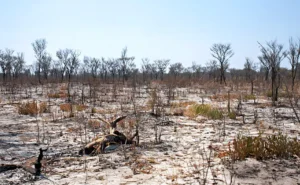
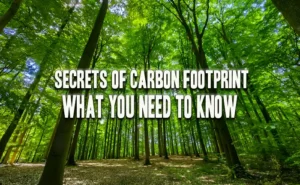

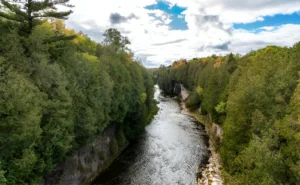
Leave your comment